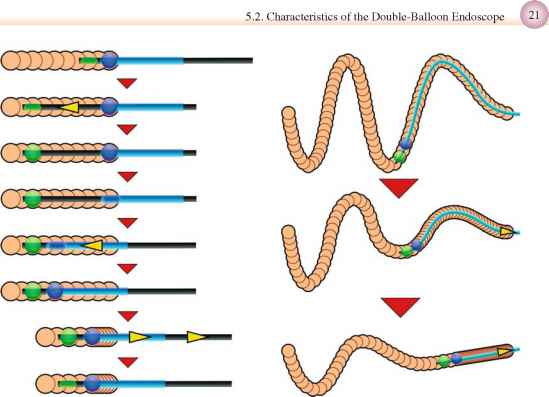Home → Double Balloon Enteroscopy

Double-Bballoon Enteroscopy, also known as push-and-pull enteroscopy is an endoscopic technique for visualization of the small bowel. It was developed by Hironori Yamamoto in 2001.[1] It is novel in the field of diagnostic gastroenterology as it is the first endoscopic technique that allows for the entire gastrointestinal tract to be visualized in real time.
The technique involves the use of a balloon at the end of a special enteroscope camera and an overtube, which is a tube that fits over the endoscope, and which is also fitted with a balloon. The procedure is usually done under general anesthesia, but may be done with the use of conscious sedation. The enteroscope and overtube are inserted through the mouth and passed in conventional fashion (that is, as with gastroscopy) into the small bowel. Following this, the endoscope is advanced a small distance in front of the overtube and the balloon at the end is inflated. Using the assistance of friction at the interface of the enteroscope and intestinal wall, the small bowel is accordioned back to the overtube. The overtube balloon is then deployed, and the enteroscope balloon is deflated. The process is then continued until the entire small bowel is visualized.
The double-balloon enteroscope can also be passed in retrograde fashion, through the colon and into the ileum to visualize the end of the small bowel.
Double-Balloon Enteroscopy has found a niche application in the following settings:
Endoscopic image of polyp in small bowel detected on double-balloon enteroscopy.
Double-balloon enteroscopy offers a number of advantages to other small bowel image techniques, including barium imaging, wireless capsule endoscopy and push enteroscopy: